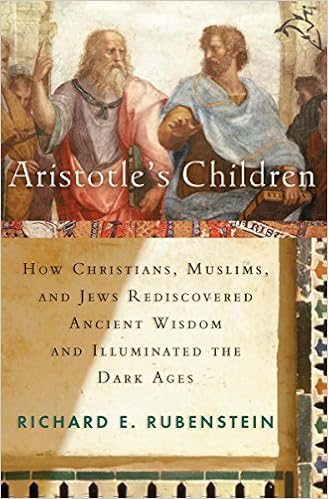PDF Download
In some cases, people could believe that reading will certainly be so trendy as well as outstanding. Moreover, people who are reading are considered as a very clever individuals. Is that right? Maybe! One that can be born in mind is that checking out routine does not just do by the clever people. A lot of smart individuals also really feel careless to review, additionally to read It's seemly that people that have analysis routine have various personality.

PDF Download
Allow's take a look at the resources that constantly give positive things. Influences can be the reasons of just how individuals life runs. To get one of the sources, you could locate the intriguing point to obtain. Just what's that? Schedule! Yeah, publication is the very best tool that can be made use of for influencing your life. Reserve will not assure you to be excellent people, but when you read guide and undertake the positive things, you will be a fantastic person.
But, do you assume that reviewing publication will make you really feel tired? Sometimes, when you always check out and end up the book promptly and also fast, you will really feel so burnt out to spend often times to read. Here, you could prepare for having just little time in a day or juts for spending your spare time. And also the book that we come currently is , so it will make some fun for you.
This is some of the advantages to take when being the participant and also obtain the book right here. Still ask what's various of the various other website? We offer the hundreds titles that are produced by recommended authors and authors, worldwide. The connect to acquire and also download and install is additionally very simple. You may not locate the complex site that order to do more. So, the way for you to get this will be so very easy, won't you?
Be the initial to obtain this e-book now and obtain all reasons you have to review this Guide is not simply for your tasks or necessity in your life. Books will certainly consistently be a good buddy in each time you read. Now, allow the others find out about this web page. You can take the advantages as well as share it likewise for your pals as well as individuals around you. By in this manner, you could really get the definition of this book profitably. Just what do you think of our concept here?
Product details
File Size: 1187 KB
Print Length: 389 pages
Publisher: Mariner Books; 1 edition (September 20, 2004)
Publication Date: June 1, 2018
Sold by: Amazon Digital Services LLC
Language: English
ASIN: B003KK5DPO
Text-to-Speech:
Enabled
P.when("jQuery", "a-popover", "ready").execute(function ($, popover) {
var $ttsPopover = $('#ttsPop');
popover.create($ttsPopover, {
"closeButton": "false",
"position": "triggerBottom",
"width": "256",
"popoverLabel": "Text-to-Speech Popover",
"closeButtonLabel": "Text-to-Speech Close Popover",
"content": '
});
});
X-Ray:
Not Enabled
P.when("jQuery", "a-popover", "ready").execute(function ($, popover) {
var $xrayPopover = $('#xrayPop_4605166E550911E98940D0CD998FCA78');
popover.create($xrayPopover, {
"closeButton": "false",
"position": "triggerBottom",
"width": "256",
"popoverLabel": "X-Ray Popover ",
"closeButtonLabel": "X-Ray Close Popover",
"content": '
});
});
Word Wise: Enabled
Lending: Not Enabled
Screen Reader:
Supported
P.when("jQuery", "a-popover", "ready").execute(function ($, popover) {
var $screenReaderPopover = $('#screenReaderPopover');
popover.create($screenReaderPopover, {
"position": "triggerBottom",
"width": "500",
"content": '
"popoverLabel": "The text of this e-book can be read by popular screen readers. Descriptive text for images (known as “ALT textâ€) can be read using the Kindle for PC app if the publisher has included it. If this e-book contains other types of non-text content (for example, some charts and math equations), that content will not currently be read by screen readers.",
"closeButtonLabel": "Screen Reader Close Popover"
});
});
Enhanced Typesetting:
Enabled
P.when("jQuery", "a-popover", "ready").execute(function ($, popover) {
var $typesettingPopover = $('#typesettingPopover');
popover.create($typesettingPopover, {
"position": "triggerBottom",
"width": "256",
"content": '
"popoverLabel": "Enhanced Typesetting Popover",
"closeButtonLabel": "Enhanced Typesetting Close Popover"
});
});
Amazon Best Sellers Rank:
#216,039 Paid in Kindle Store (See Top 100 Paid in Kindle Store)
ARISTOTLE’S CHILDREN brilliantly shows how Aristotle and Plato influenced the history of Christianity in Europe. One main point that Rubenstein makes is that the Dark Ages weren’t dark, and that the modern world loses some needed insight into its current state by insisting that they were. Like the author, as a child I was taught that Columbus proved that the world was spherical, and that most people of his time thought it was flat. And yet Aristotle describes a spherical Earth centuries before Christ, and Aristotle’s work has been accepted as fact as soon as it was rediscovered in the 12th century. This idea of medieval ignorance has apparently no changed in the past fifty years. When I taught Theory of Knowledge, my students would invariably cite the flat earth “theory†when asked for an example of how scientific ideas had changed over time. So young people are still being misled on this.Though acquainted with Ockham’s razor, I did not realize how influential this had been in severing science and religion, in that Ockham denied that we could reason our way to an understanding of God. He wished to de-mystify nature and re-mystify God. Eventually, that is what happened, with our present divorce of science and religion. But reason and faith were not separate endeavors in the Middle Ages. Science sprang from medieval thought, from the confluence of reason and faith, though it is common for us to think that science somehow arose in complete opposition to religion.Most scientists are materialists and logical positivism is the philosophy most suited to materialism. The logical-positivists insist that the proposition “Stealing is bad,†demonstrates nothing except the mental state of the person stating it, merely a subjective opinion. But they do not say the same thing for â€A tomato is red.†Presumably color is real but morality is not, even though a color blind person cannot see that a tomato is red, and only morally blind people cannot see that stealing is bad. Admittedly, the definition of stealing is more ambiguous than the definition of red. Although, perhaps there are shades of red in a comparable way to shades of stealing. Is knocking someone in the head and taking his wallet stealing? Essentially everyone agrees, yes. Is compelling workers to work for a non-livable wage, and punishing them if they protest, a form of stealing? This is subjective. Does subjective mean that one opinion is no better than the other?Rubenstein argues, “Answers [to moral issues] that make sense require the sort of dialogue between a rationally influenced faith and an ethically interested reason that took place a few centuries ago in the medieval universities.†And, “Reason could transform the earth, if only science and technology were inspired and guided by a new global morality.â€So how does that come about?
I believe this book can be appreciated by anyone interested in the history of ideas. The more you know about the subject matter of ancient/medieval philosophy the more you can appreciate the author's subtlety and depth. His forte is revealing the vibrant interactions of these ideas and the societies that shunned or accepted them. The Byzantine empire closed the Academy in Athens--Islam embraced and transmitted philosophy back to the Western world. Then, Islam shunned philosophy in the 12th century. Back in the Christian World, they sparked a creative tension, a project called the "unity of faith and reason". It blossomed into the Medieval Renaissance of the 13th century. It laid a foundation for scientific inquiry inspired by cosmic order. The Church poured vast resources into the project as a demonstration of natural theology, how God does reveal His purpose through the order of the natural world. Without the confidence of faith, these ideas may have remained "stillborn". Yet they grew to fruition within the social fabric of the Church and its universities. The 14th century saw the dissolution of the "faith and reason" project. This coincided with economic upheavals and the Black Death. By this time both faith and reason could hold forth independently. Much can be gained by revisiting and re-evaluating this fruitful tension in our world today.I am puzzled about the author's preface. He poses a peculiar naïveté regarding his subject matter, which he obviously doesn't really have?
This is a satisfying study of how the lost ancient teachings of the Greeks came back to the surface in medieval scholastic philosophy. Interestingly, the old conflict between Plato and Aristotle, "The Ideal" versus "The Real" surfaced all over again, this time in schools of Christian theology. The incredible, nimble minds of Aquinas, Duns Scotus, Albertus Magnus, and others carried on their high wire duels over the looming threat of heresy, with the accompanying threat of unpleasant death if you got it wrong. A lot of it had to with bridging the gap between faith and reason,a struggle that continues to this day. Lately the know-nothings seem to be winning, but history shows th u s is a continuing see-saw.The great rhetorical arguments limned here paved the way for modern philosophical thinking, clear through the existentialists. They owe many of their techniques to arguments in great stone cathedrals lit only by sunlight or torches nearly a thousand years ago. The book is an entrancing read that takes us back to those fraught times, and reminds us how we got here, and helps us hear the echoes of those conflicts in the world we live in presen rtf ly.
As a believer, this probing treatise on Christianity's evolution systematically addresses the origin of Faith, and the dialectics that spawned it. Circumnavigating Aristotle's Cause and Effect philosophy, Mr. Rubenstein adroitly melds Reason and Faith into parallel realities and assumptions, each supporting the other by inductive or objective methods. Cardinal is the Aquinas claim that doubting leads to enquiry, enquiring to perceived truth. Aristotle's Children is fallow reading for enquiring minds and searching hearts.
PDF
EPub
Doc
iBooks
rtf
Mobipocket
Kindle

0 komentar:
Posting Komentar